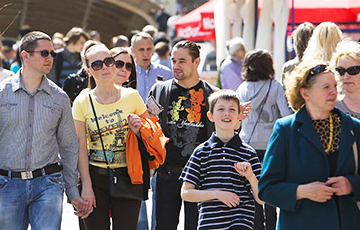The Way Belarusians Are Trapped In Absolute Poverty
36- 24.09.2018, 9:27
- 36,865

There is a critical situation in the rural area.
The number of families with many children is increasing in the rural area. There is a threat for them to find themselves behind the poverty line as soon as the maternity leave is over.
Families with children are at risk. It is true about families with many children and broken families living in the rural area. It is revealed in the course of the survey "The role of support program for families with children" presented within the framework of KEF-2018 regional conferences and carried out by economist Hleb Shimanovich from IPM Research Center, Ezhednevnik writes.
The economist points out that poverty line among children slightly decreased in 2017, and it is connected with the child allowance increase.
As for different allowances, child allowances (children of 0-3 years old) are, according to the author of the survey, the most effective. Allowances granted right after the birth are less effective.
"It's obvious because the second kind of allowances aim at support of existing income, to retain status quo," Hleb Shimanovich explains. - Due to efficiency of child allowances for children of 0-3 years old, this group is at the lowest risk of poverty."
With age the risk increases
At that, the expert notes that the highest risk is observed among children of elementary-school age.
"Thus, the support to families dicreases as soon as a child reaches the school age. However, expenses increase and it influences the subsistence level. The child of 6-18 years old needs as much money as a person of an active working age, the author of the study stresses. - And these to effects superimpose on one another and give the ground for poverty growth at this age category."
"It is also true for children who reach the age of 3 years. It's the time when a maternity leave ends. It can be assumed that a woman has either a low-paid job or has none," the expert notes.
The salary is lower than the child allowance
Researchers calculated that given a one-time payment, a family received around 470 rubles per month for the first child and 650 rubles per month for the second.
"It is noteworthy that the salary of a woman who worked more than 6 months within a year sometimes coincides with the monthly child allowance. In addition, in the rural area an average salary is lower than the allowance paid for the second child," Hleb Shimanovich notes.
By the way, if all allowances paid within the first year are summed up, it turns out that the salary of 80% of Belarusian women is lower than the allowance guaranteed by the state during the first year after the birth of a child.
"Accordingly, it bears consequences for the demographic situation," the expert believes.
Fighting poverty with allowances
Hleb Shimanovich believes that it reveales unnerving conclusions: child allowance, the very birth of a child becomes an instrument to fight poverty, especially in the rural area.
Since 2011, the time when allowances started to grow, women in rural areas have oftener started giving birth to their second children. It is noteworthy that the most depressed districts have the highest birth rate.
Meanwhile, the expert points out that problems which relate to the labour market accumulate.
"In the rural area women of younger age give birth, they have less labour experience. If maternity leaves follow in a row, it is getting harder for people to find a job with a decent salary in future. And it bears challenges not for the social policy, but for labour market policy," he explains.
Hleb Shimanovich believes that poor benefits are not the problem. The labour market, low wages are the reason.
"It is the fact that in the rural area there are a lot of families with many children who are about to find themselves beyond the poverty line as soon as the maternity leave is over. The situation is sad. What are ways out of it? We should look for them. Otherwise, no social protection system is capable of fighting repercussions," Director of the IPM Research Center Aliaksandr Chubryk sums up.









